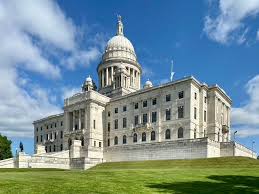Early Exploration and Settlement (Pre-1600s to 1636)
Before European settlers arrived, the region now known as Rhode Island was inhabited by various Indigenous tribes, including the Narragansett, Wampanoag, and Pequot. These tribes were skilled in agriculture, fishing, and hunting, living in the area for thousands of years. In the early 1600s, European explorers began to venture into the region. In 1524, the Italian explorer Giovanni da Verrazzano arrived and charted parts of what would become Rhode Island. However, it was not until 1636 that English settlers, led by **Roger Williams**, founded Providence, marking the beginning of Rhode Island’s colonial history. Williams, a Puritan minister, had been banished from the Massachusetts Bay Colony due to his beliefs in religious freedom and separation of church and state. He established Providence as a haven for those seeking religious tolerance, a principle that would become a cornerstone of Rhode Island's identity.




.jpg?w=851)
.jpg)
.jpg?w=851)
.jpg?w=851)
.jpg?w=851)
.jpg?w=851)
